Do you want to use Ads.txt files to help increase your website’s ad revenue? You may not know what an Ads.txt file is, but it is very easy to understand. The Ads.txt files allow publishers to decide who can sell ads on their website. This, in turn, will help protect publishers from ad fraud and even increase a website’s ad revenue slightly.
One of the main sources of revenue that a website will receive comes from ads. Ads can be quite intrusive and can really annoy visitors if they are unrelated to them. Google Adsense can help you display appropriate ads for your visitors and also block others. Today, I will demonstrate how to use Ads.txt file to manage your ads and improve your website’s ad revenue.
Who Created Ads.txt Files
Ads.txt files help protect publishers from ad fraud, which can cost millions of dollars. To be even more specific, they are an IAB approved text file that is meant to prevent ad fraud. IAB is the Interactive Advertising Bureau Tech lab, which is a foundation that develops advertising standards for the industry. This is essential because many companies will create advertisements that can completely ruin the user experience.
In retaliation, many web visitors will use Ad Block or a variant of it, which has the potential to cripple how websites make money. There are many ways to detect ad block and try to prevent it, but many visitors will move on to another website that does not try to disable Ad Block. Many experts agree that the best guard against Ad Block is to make ads that are not intrusive and ruin visitors’ experience.
What Makes Ads.txt Files so Important
Online advertisers suffer millions in losses due to ad fraud. Many websites will choose to make the quick buck and trick ad platforms. These tricks include fake clicks, fake views, fake impressions, domain spoofing, and so much more. To combat this, publishers can provide publisher IDs to websites who are allowed to sell their ads. These publisher IDs are all stored in your website’s Ads.txt file.
This makes it easy for publishers to keep track of websites that are allowed to sell their ads and also steer clear of well-known tricksters. These files are, of course, compatible with services like Google Adsense and other advertisement services. In fact, these services recommend using Ads.txt files to track and manage your advertisement.
How to Use Ads.txt files in WordPress
Today, I will demonstrate how to use Ads.txt files to manage your ads and improve your website’s ad revenue. These Ads.txt files can be created a few ways, but I will demonstrate how to create and use them with the Ads.txt Manager plugin. This plugin eliminates the need of uploading a file and is very easy to use.
Installing the Ads.txt Manager Plugin
Begin by clicking on Plugins and selecting the Add New option on the left-hand admin panel.
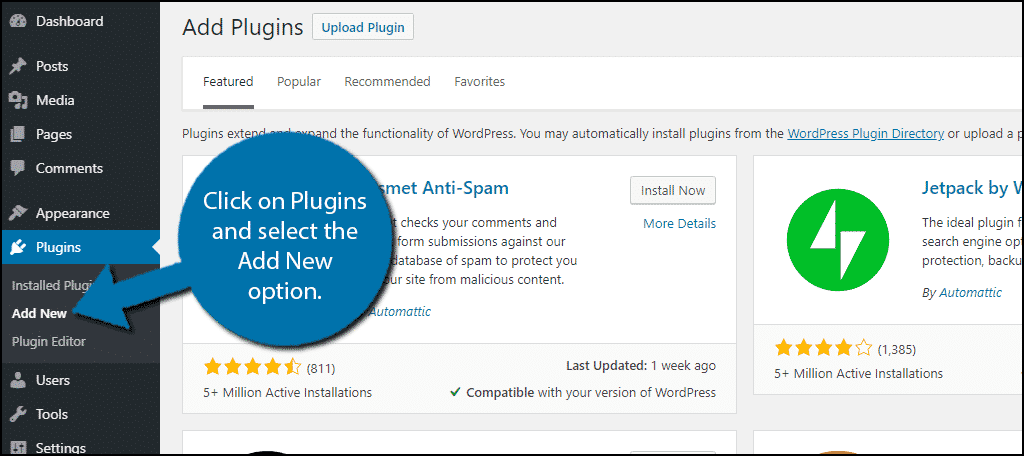
Search for Ads.txt Manager in the available search box. This will pull up additional plugins that you may find helpful.
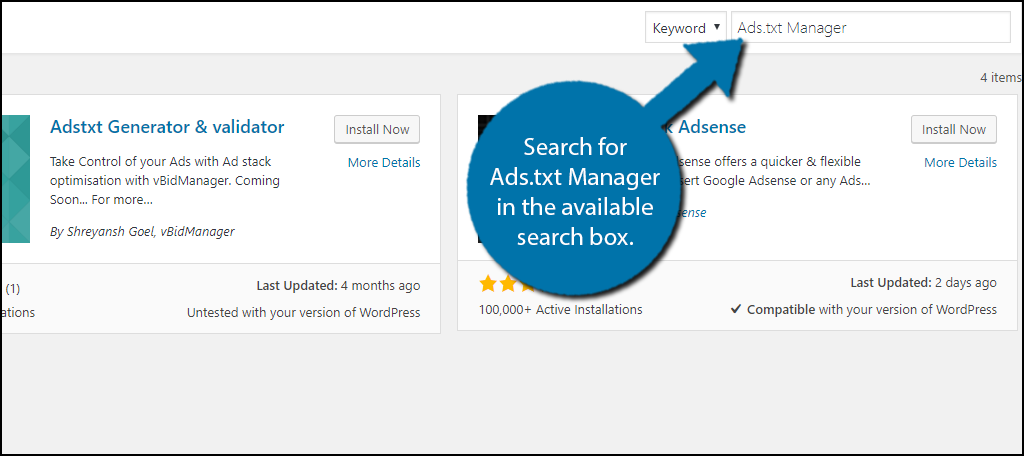
Scroll down until you find the Ads.txt Manager plugin and click the “Install Now” button and activate the plugin for use.
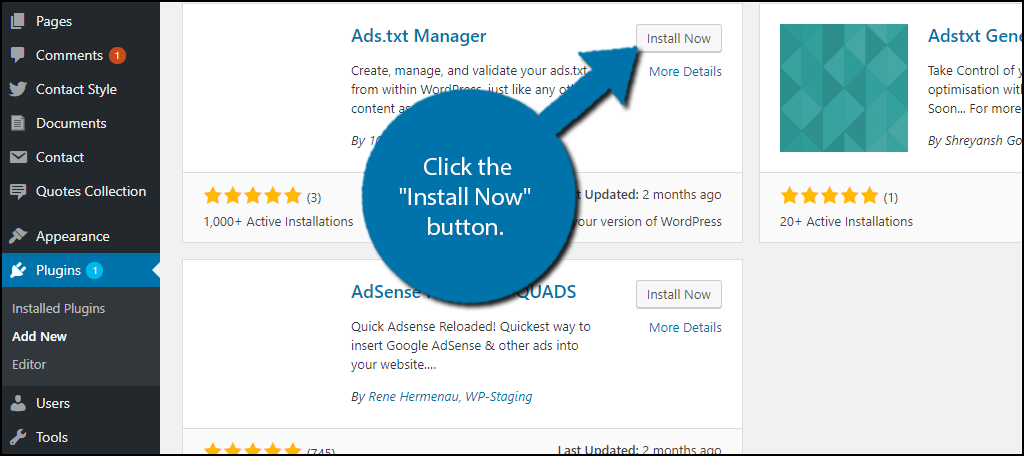
On the left-hand admin panel click on Settings and select the Ads.txt option. This will pull up the main settings page.
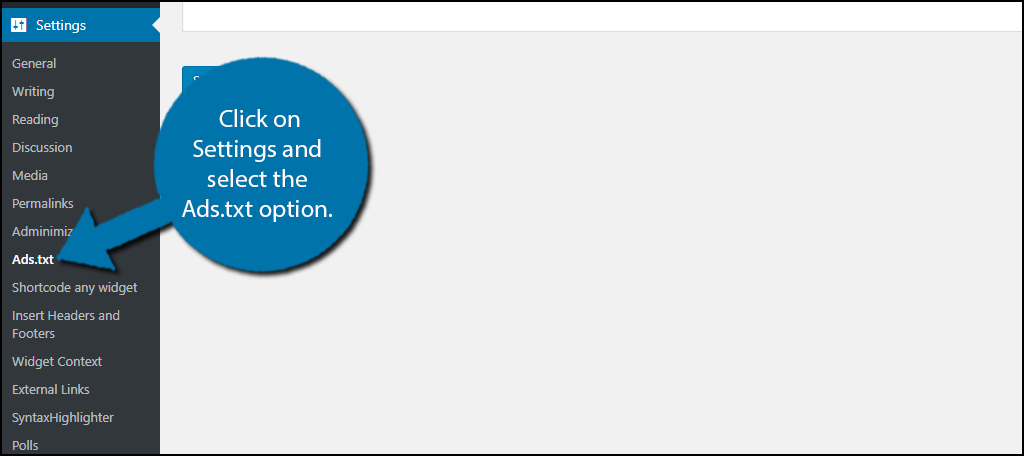
It’s now time to create your website’s Ads.txt file.
Creating an Ads.txt File
Creating an Ads.txt file is very fast and easy. Keep in mind that you will need to get the publisher ID before you create the document. Without that, the document is useless. This document is visible to the public and should be as accurate as possible.
Keep in mind if you use a service like Google Adsense or a different one, you will need the appropriate information from them. In this example, I will demonstrate with Google AdSense. They also have a very detailed page with the same example.
The plugin provides a blank sheet to type in. Every line should contain one Publisher ID. Each line consists of four items. The first is the domain name of the company that is granted permission to sell, the second is the publisher ID, the third is the relationship type (DIRECT or RESELLER), and the fourth is the ID of the advertisement platform. In this case, Google AdSense ID is f08c47fec0942fa0. This will be different if you are not using Google AdSense. Each of these items is separated by a comma and space. Here is an example of what it looks like:[ht_message mstyle=”info” title=”” show_icon=”” id=”” class=”” style=”” ]google.com, pub-0000000000000000, DIRECT, f08c47fec0942fa0[/ht_message]
Insert as many lines as necessary and make sure that each line has the correct information. Click on the “Save Changes” button to save your Ads.txt file.
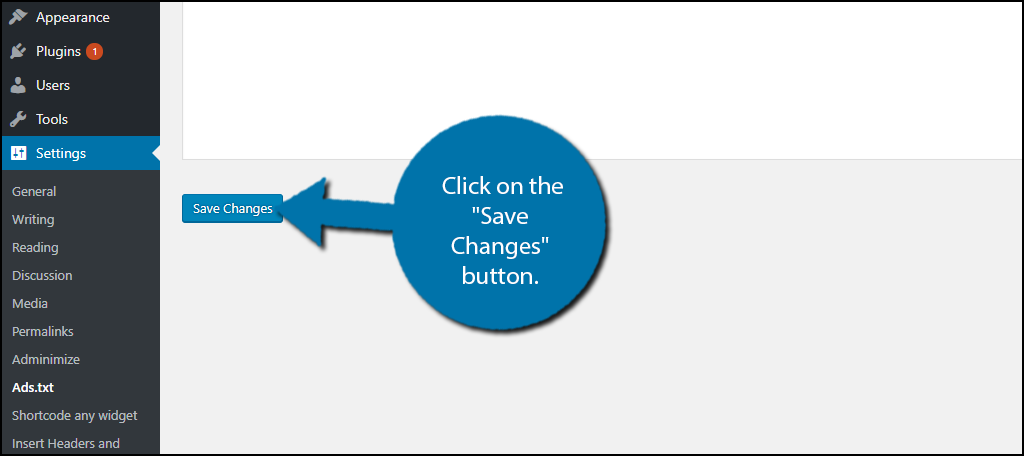
After saving your file you might get the following error message:[ht_message mstyle=”info” title=”” show_icon=”” id=”” class=”” style=”” ]Earnings at risk – One or more of your ads.txt files doesn’t contain your AdSense publisher ID. Fix this now to avoid severe impact to your revenue.[/ht_message]
In this case, you need to correct your Publisher ID. You can edit this file at any time and it should be kept up to date. A good rule of thumb is to update this list every time you get a new advertiser on your website.
Congratulations, you have successfully created and learned how and when to manage your Ads.txt file. This will help your website become a place advertisers trust. Remember that making a quick buck off of providing false information and committing ad fraud hurts everyone in the industry.
Advertisement Keeps the Internet Running
Advertisement is what makes entering a website free. For example, imagine if you wanted to use Google, but advertisement did not exist. You would have to pay a subscription fee for their service or a pay-to-use system would be in place. Systems like this would cripple the way the Internet works and stop smaller websites from ever starting in the first place.
Of course, pay-per-view websites exist and can be quite successful if you have the content to support the model. Not everyone is willing to pay for something, especially when it can be found for free somewhere else.
What advertisement platform do you use? How large is your website’s Ads.txt file?
